The structure of disc galaxies
The bars, spiral arms and outer disc breaks
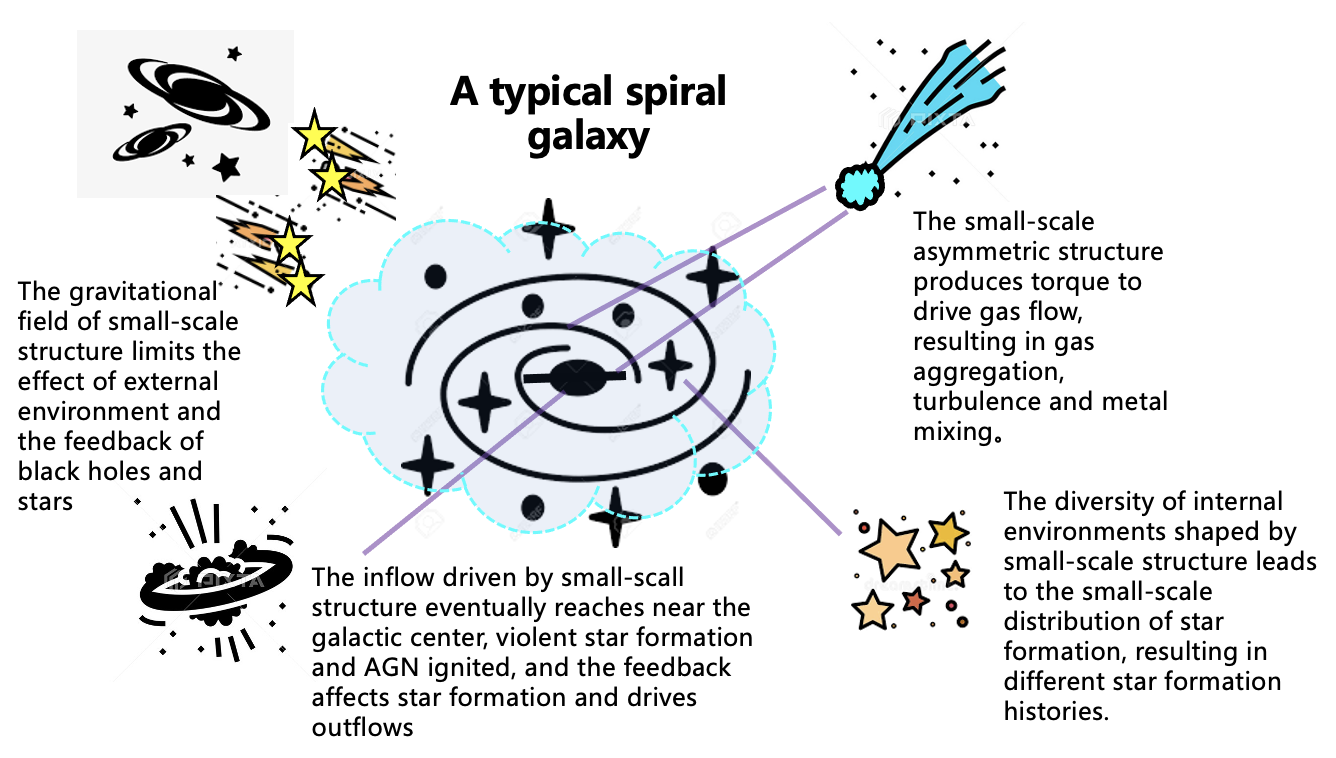
As sketched above, small-scale structure of galaxies play a key role in setting the environments for internal physical processes to occur. We introduce below our study of different disk structures of galaxies.
Growth of the central mass concentration
The role of bars
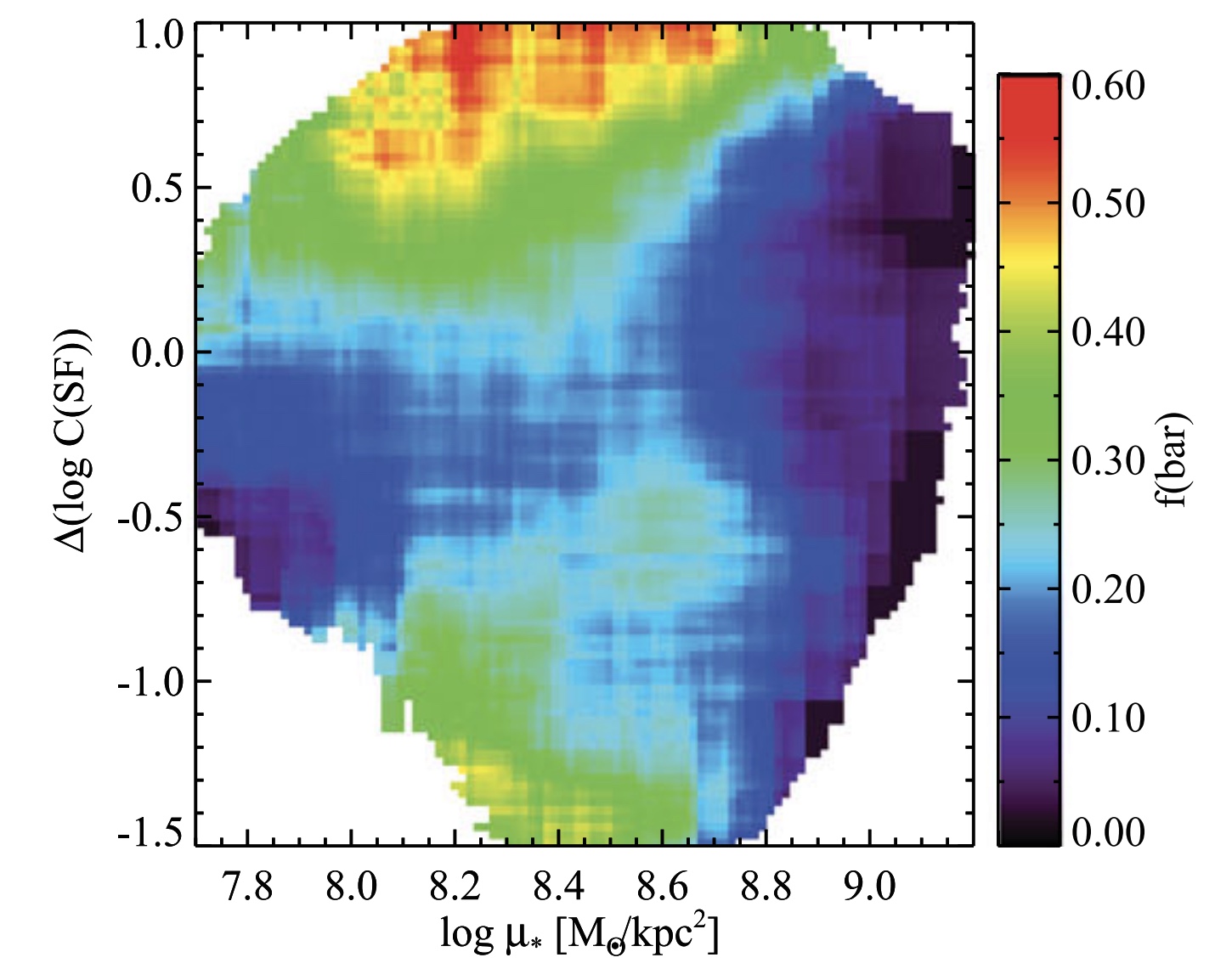 In this paper, we found that the fraction of galaxies hosting bars tend to be highest, when the galaxies have either significant enhanced central star formation, or strongly suppressed central star formation. It suggests that bars may play role in the quenching of central star formation, or mechanisms that quenched the star formation also enhanced the formation or maintenance of bars.
In this paper, we found that the fraction of galaxies hosting bars tend to be highest, when the galaxies have either significant enhanced central star formation, or strongly suppressed central star formation. It suggests that bars may play role in the quenching of central star formation, or mechanisms that quenched the star formation also enhanced the formation or maintenance of bars.
The role of spiral arms
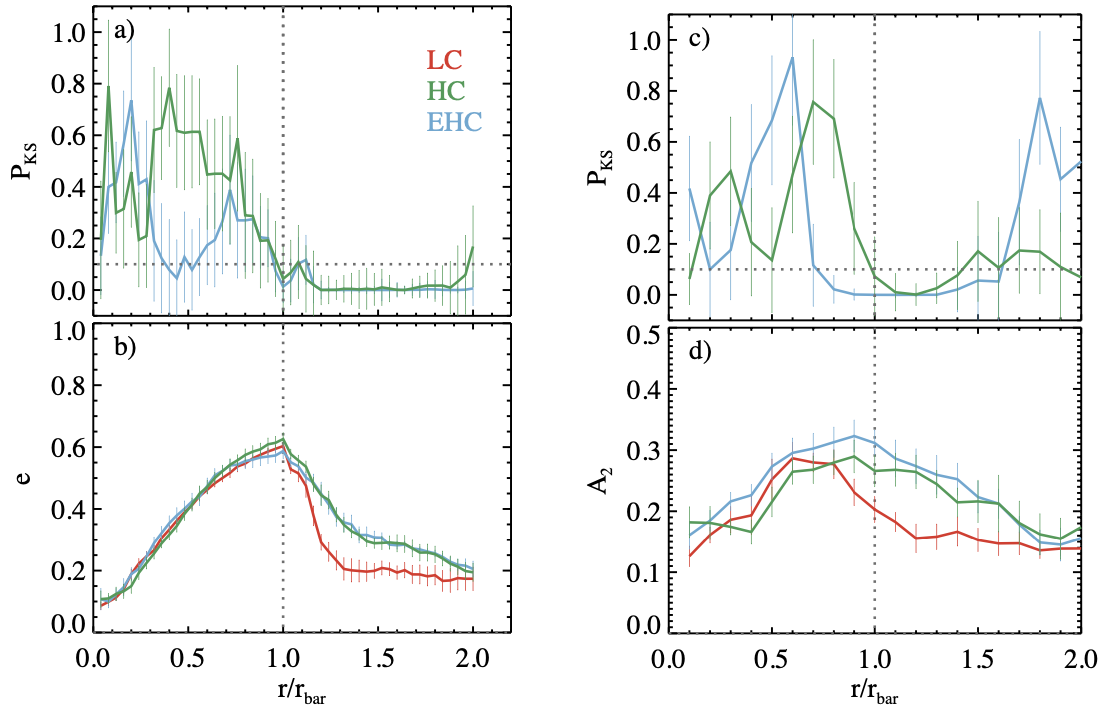 In this paper, we found that, at least in the highly disk-dominated barred galaxies,
the strengths of spiral arms are likely the key parameter that determines whether the barred galaxies have centrally enhanced or suppressed SFR.
In this paper, we found that, at least in the highly disk-dominated barred galaxies,
the strengths of spiral arms are likely the key parameter that determines whether the barred galaxies have centrally enhanced or suppressed SFR.
Growth of the Disk
The growth of bulges and discs with HI
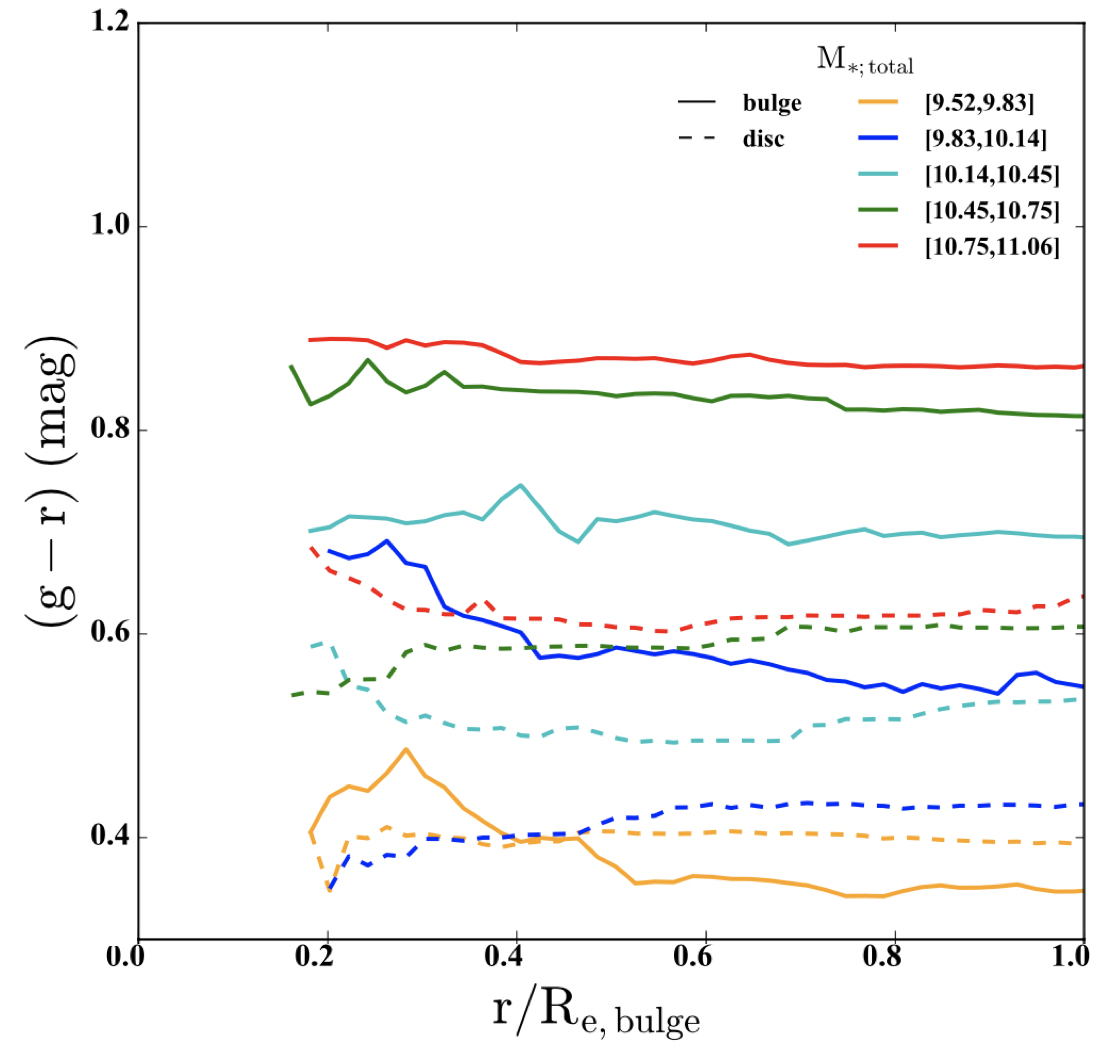 This paper
find that at fixed stellar mass, disc colours are correlated with the HI mass fraction, while bulge colours are not. The lack of a correlation between the bulge colour and the Hi mass fraction is regardless whether the bulges are pseudo, or whether the galaxies host bars or are interacting with a neighbour. There is no strong correlation between the colours of the discs and bulges either. These results suggest that the current total amount of Hi is closely related to the formation of discs, but does not necessarily fuel the formation of (pseudo) bulges in an efficient way.
This paper
find that at fixed stellar mass, disc colours are correlated with the HI mass fraction, while bulge colours are not. The lack of a correlation between the bulge colour and the Hi mass fraction is regardless whether the bulges are pseudo, or whether the galaxies host bars or are interacting with a neighbour. There is no strong correlation between the colours of the discs and bulges either. These results suggest that the current total amount of Hi is closely related to the formation of discs, but does not necessarily fuel the formation of (pseudo) bulges in an efficient way.
Up-bending breaks and gas accretion
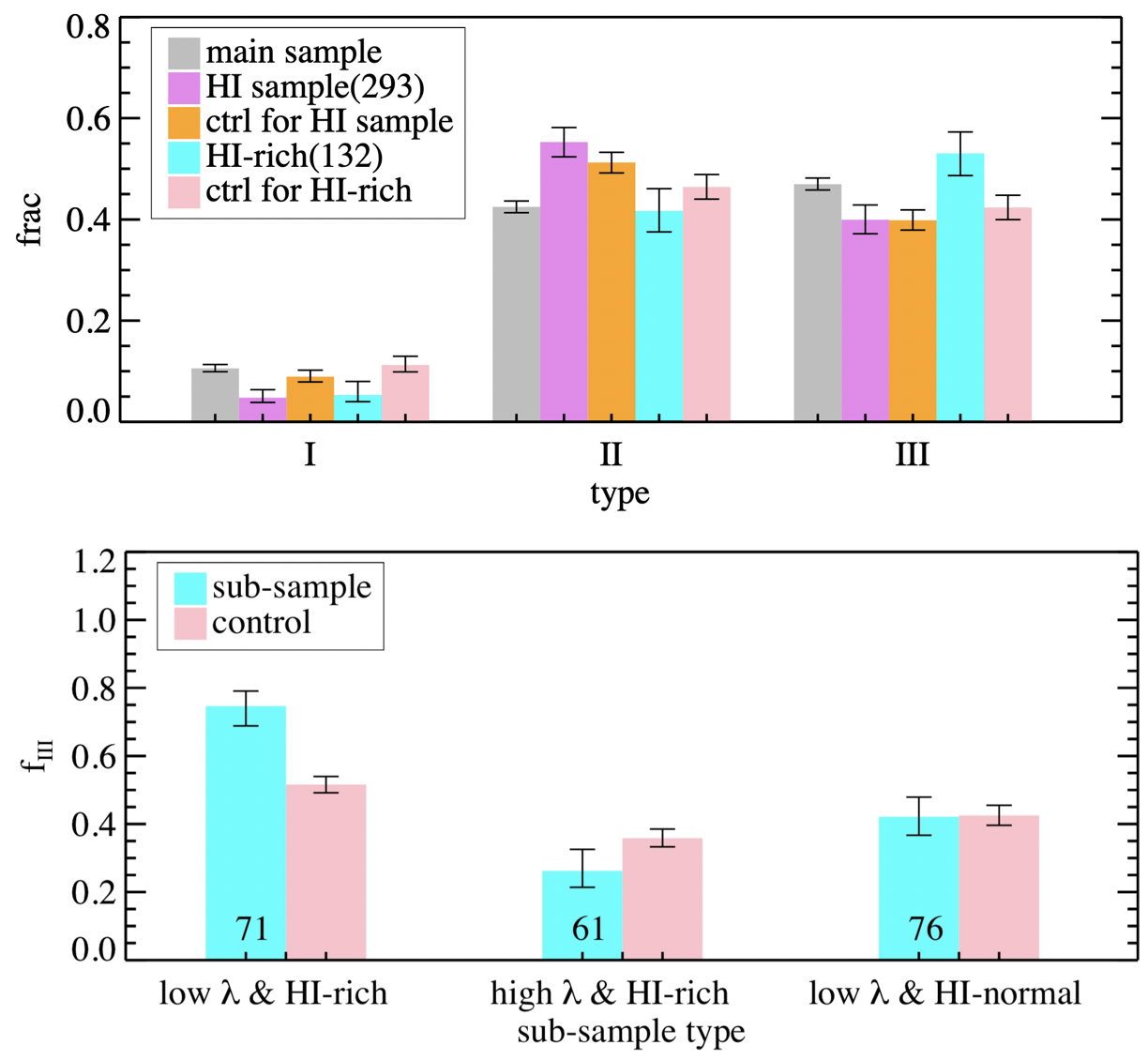 This paper found that HI-rich and low-spin galaxies tend to have high fraction of hosting up-bending (type III) outer discs (~75%), which is significantly higher than control galaxies. The high and excess type III fraction is independent of the existence of strong bars and environment. The result supports the in-situ star formation fueld by gas accretion to be an important way of building the up-bending outer discs.
This paper found that HI-rich and low-spin galaxies tend to have high fraction of hosting up-bending (type III) outer discs (~75%), which is significantly higher than control galaxies. The high and excess type III fraction is independent of the existence of strong bars and environment. The result supports the in-situ star formation fueld by gas accretion to be an important way of building the up-bending outer discs.
HI and the inside-out disc formation
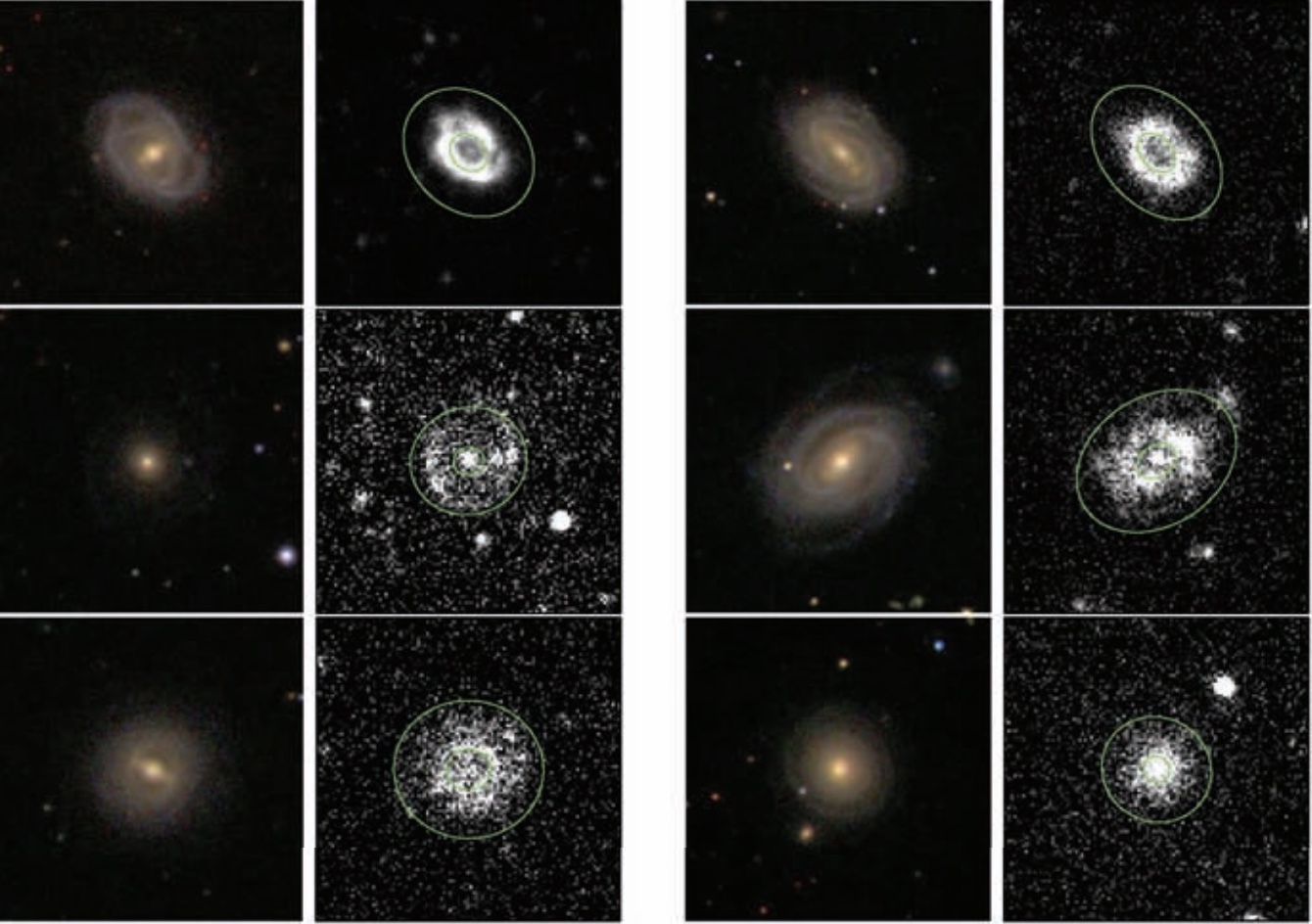 This paper shows that, at a given stellar mass, a higher HI mass is associated with the bulk of star formation shifting outward in radius. It support the picture of ”inside-out“ galaxy formation, where the active star forming regions gradually move towards the outer regions of the galaxy disk as gas with ever higher angular momentum is accreted.
This paper shows that, at a given stellar mass, a higher HI mass is associated with the bulk of star formation shifting outward in radius. It support the picture of ”inside-out“ galaxy formation, where the active star forming regions gradually move towards the outer regions of the galaxy disk as gas with ever higher angular momentum is accreted.